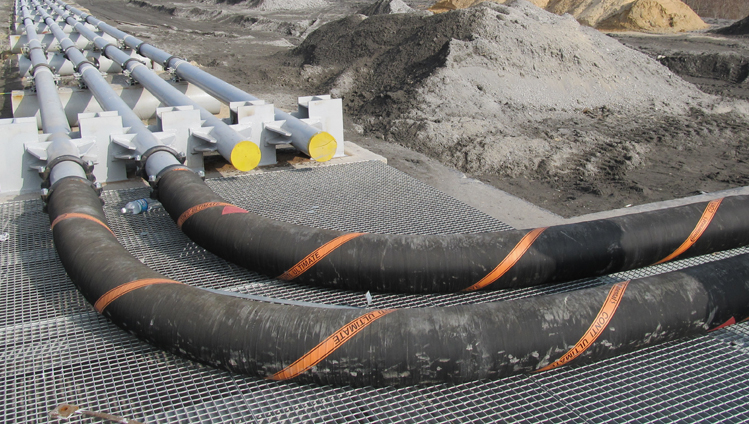Concrete Pump Hose
2023-07-05 10:50:01
Concrete pump hose is a crucial piece of equipment for the concrete industry. It carries concrete from the mixer to the job site and provides a flexible conduit for directing concrete at a pour.
To maximize the yards per hour your concrete pump produces, the hose you use must be the same diameter as your outlet. Otherwise, progress slows dramatically.
Flow
Concrete pump hoses help workers move thick and abrasive substances like concrete from trucks to construction sites. They are designed to work with high pressure to ensure that concrete gets where it needs to go and resist corrosion so they can be used repeatedly without getting damaged.
Flow of the hose depends on the type of concrete that is pumped and the size of the aggregates. Larger aggregates need larger diameter pipelines to allow concrete to flow more quickly. A wrongly configured hose can lead to blockages.
A rise in line resistance on the concrete pump pressure gauge indicates a line blockage. A quick pressure build up prior to the blockage suggests the problem is closer to the pump, while a slow pressure build up points to the delivery end of the line.
Workers should check the hopper to make sure that the concrete has not fallen below the intake port and replaced with air. It is also important that crew members stand back from the placing hose until it clears and a steady stream of concrete is being discharged.
Weight
A heavy hose used to pump concrete, fireproofing, mortar, shotcrete and grout materials. It is made of abrasion resistant, high strength steel and is rated to over 800 psi. Concrete placement hoses feature full-flow internally expanded couplings that prevent material build up on the hose shank, allowing the hose to be cleaned.
Often times the concrete line pumps are used in residential pours and there may be underground pipes. It is important for the hose man and concrete pump operator to communicate very well about where the concrete will be going.
Never hang more weight on the boom than it was designed to hold. This could result in a serious injury or death. Exceeding the manufacturer’s recommendations can also cause the boom to 'overload', leading to premature wear and failure. To avoid this, a variety of options are available to reduce the amount of tip hose weight. These include using a reducer or boom configuration.
Durability
Concrete pump hoses are made of durable materials to hold up to high pressure. They resist wear and tear and are abrasion-resistant to ensure long-lasting service. They also resist corrosion so you can complete your projects without damaging the hose.
It is important to use a hose that has the proper pressure rating for your concrete pump. Using a lower-rated hose can cause a hose whip. This can cause injuries to anyone in the vicinity of the hose whip.
There are three things that need to be in place for a hose whip: air in the concrete delivery system, a blockage in front of the air, and force behind the blockage that compresses it. The compressed air builds until either a) the blockage is ‘blown out’ by the force behind it, or b) the concrete reaches maximum pump pressure (determined by the pump manufacturer).
If this happens, it releases that energy in the form of a hose whip. This can injure not only the concrete pump operator but also any person within reach of the hose whip.
Safety
Concrete pump users are exposed to a variety of hazards while operating the machine and it is important to recognise these to minimise injury and onsite delays. 'Hose whip', or the uncontrolled rapid motion of the end hose on a concrete placement boom is one of these serious hazards.
This occurs when the entrapped air in a delivery system becomes compressed due to a blockage and then releases rapidly propelling concrete forward. This is an extremely dangerous situation and must be avoided at all costs.
Other risks include falling hazards when a worker is attempting to clear a blockage at height and electrocution dangers when the boom or end hose comes in contact with overhead power lines. Even if the boom and chassis appear to be at a safe distance from a power line, 8,000 volts are present on most residential power lines making contact an instant death threat. Regular inspection of couplings and gaskets is also necessary to ensure that these are in good condition.